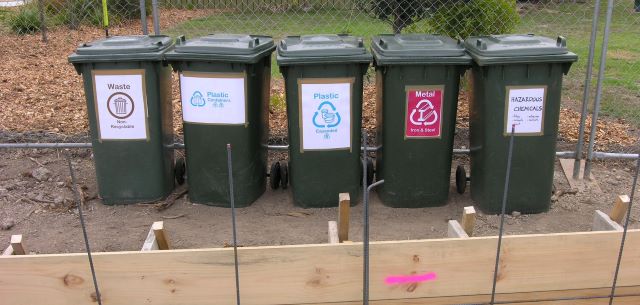A life cycle assessment looks at the environmental impact of building, operating, maintaining and demolishing a house.
This life cycle assessment of the Waitākere NOW Home:
- includes the life cycle phases of construction, use, maintenance, transportation of materials to site and end of life
- compares lifetimes of both 50 and 100 years
- evaluates seven key building systems separately: floor / foundations; external walls; internal walls; ceiling / roof; windows; doors; integrated water systems
- compares the design to four alternative designs.
The results
The operational stage of the Waitākere NOW Home had by far the greatest environmental impact of any of the life stages. The operation contributed around 65-76% of each of these categories: acidification potential, global warming potential and energy consumption of the building. In fact, combining the operational and maintenance stages, as would more realistically reflect the period of use of the house, accounts for the vast majority of impacts in these categories (85% of acidification potential; 86.2% in global warming potential; and 89.1% of energy consumption).
The construction and maintenance stages were the next biggest contributors to the life cycle impact. Each had similar contributions, except for photochemical ozone creation potential. Regular repainting meant the maintenance stage had a greater impact (61%) – paint has a high photochemical ozone creation potential per litre.
The construction stage had a low global warming potential because of the net negative global warming potential of the built-in timber. The global warming potential of all the building systems that contained timber was lowered due to the storage of CO2. The end of life stage had the smallest contribution to the life cycle impact.
Comparing designs
When the Waitākere NOW Home was compared to four alternative designs, the original design had the lowest life cycle impact for energy consumption and global warming potential. The original design had the lowest operational impacts because the energy storing capacity of the concrete slab reduced space heating to a minimum.
The brick cladding alternative had the lowest life cycle impact for acidification, eutrophication and photochemical ozone creation potential because the brick cladding did not require repainting, which reduced the construction and maintenance impacts.
The suspended timber floor alternative design had a higher maintenance impact due to re-carpeting. It also had the highest operational impact, but the lowest construction impact for global warming potential because of the stored CO2 within the timber.
All the designs had the lowest life cycle impact in Auckland largely because of the lower heating demand during use. Increases in operational impact between Auckland and Wellington ranged from 120% for the suspended timber floor design to 183% for the original Waitākere NOW Home.
Conclusions
The Waitākere NOW Home case study clearly shows that our biggest opportunity to reduce the environmental impacts of our homes is to improve their performance and operation. It is less significant which construction material is chosen than which combinations of products minimise the environmental impacts during the operational life of the building. When the whole life of a building is considered, and given the length of the operation phase compared to other phases, the manufacturing impact of a particular product may be relatively small.
Efforts should focus on how to get the best results during operation, in particular, by reducing the energy requirements for heating and hot water supply through good solar orientation and passive solar design.

What else is in our knowledge base?
- Life cycle assessment of the Waitākere NOW Home
- Life cycle assessment of the Waitākere NOW Home and two Papakōwhai Renovations houses
- The role of LCA in decision making in the context of sustainable development
- Guidelines for LCA practitioners and users of building-related LCA studies
- Analysis of currently available (2006) environmental profiles of building products
- White paper: Life cycle assessment and the building and construction industry
